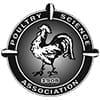Explore all the information on
Poultry biosecurity
Biosecurity is a key management tool and an essential part of any successful poultry production system: it can be defined as the planning and implementation of a set of measures to protect domestic poultry flocks against the introduction of unwanted organisms. Because of the concentration in size and location of poultry flocks in current commercial production operations and the inherent disease risks associated with this type of production, it is imperative that poultry producers practice daily biosecurity measures. Developing and practicing daily biosecurity procedures as best management practices on poultry farms will reduce the possibility of introducing infectious diseases such as Avian Influenza and Exotic Newcastle as well as many others. Contract poultry growers should be familiar with the specifics of their company’s biosecurity protocols and work closely with company representatives to implement those programs.
Vijay Durairaj (Huvepharma) explains the severity of this disease, and comments on diagnosis and prevention best practices, in this interview during IPPE 2023 in Atlanta, USA....
Comments : 0
Recommendations: 1
A highly pathogenic strain of Avian Influenza (sometimes called bird flu) is currently spreading across the United States. The virus has been detected in six States since January 2022 (see Figure 1). Avian influenza: about the...
Comments : 0
Recommendations: 0
by Sam Shafer
Farms can take three specific steps to prevent infections in broilers
In the battle between biosecurity and disease, which safety measures have the best track records at preventing infections from spreading?
For a new study, a team of poultry scientists in Germany compared biosecurity measures on farms with the incidence of cellulitis, a bacterial skin infection that can make broiler carcasses unfit for...
Comments : 0
Recommendations: 0
Introduction Biosecurity increasingly gains importance for the health management of poultry flock. It includes all measures to prevent pathogens from entering the flock and to reduce the spread of pathogens within the flock in order to keep the birds healthy and also to limit the spread of pathogens to the environment. Biosecurity can be divided into 3 different tiers or levels: the conceptual, structural and operation biosecurity. The conceptual biosecurity mostly deals...
Comments : 2
Recommendations: 0
A new educational program, hosted by the American Feed Industry Association (AFIA), will focus on biosecurity preparedness in the animal food industry. The program, “ Biosecurity: Preparedness Must Be Perpetual ,” will take place on Jan. 25, 2023, in conjunction with the 2023 International Production & Processing Expo, taking place Jan. 24-26 in Atlanta,...
Comments : 0
Recommendations: 0
What is Biosecurity? Biosecurity means protection of life. In Poultry biosecurity means prevention and control of pathogens to enter and spread into and between the flocks. Good biosecurity is like a chain. Whoever does not follow the biosecurity roles, breaks the chain. The basic purpose of biosecurity is: A. Prevention of pathogens to enter the flock. B. To increase farm productivity and quality. C. Minimize the risk of food safety pathogens (e.g.,...
Comments : 0
Recommendations: 0
Introduction ‘Poultry’ collectively refers to domesticated birds, especially those valued for their meat and eggs, such as chickens, turkeys, ducks, geese and guinea fowl. Of all avian breeds, chicken breeds make up the vast majority of 63%, followed by ducks at 11%, geese at 9% and turkeys 5%, but indigenous or heritage breeds make up most of the world’s poultry genetic diversity (Pym, 2013). Over the past 50 years, the poultry sector has expanded,...
Comments : 0
Recommendations: 0
Chanelle Taylor (Cargill) talks to Sam Shafer (PSA) about Highly Pathogenic Avian Influenza (HPAI) and how it has severely impacted the poultry industry's birds, products, and the mental health of workers. Let's Squawk About It is a monthly interview segment by the Poultry Science Association....
Comments : 0
Recommendations: 0
Diseases are produced by micro-organisms which are universal and single organisms reproduce and multiply number of times. Disease incidences are higher in old and densely populated poultry farms. Bio-security is of immense help to reduce disease hazards and improve health and productivity of birds. Optimum and profitable poultry production can be achieved by reducing disease risk to minimum extent. Bio-security literally means safety...
Comments : 10
Recommendations: 0
by Sam Shafer
Disinfecting vehicle surfaces appears to help control viral spread
In 2016 and 2017, duck farmers in France faced the grim reality of having to depopulate their flocks due to avian influenza outbreaks. A study conducted at the time showed that the trucks and crates used for bird transport during this disease-control effort were often not decontaminated correctly.
In 2020 and 2021 came another wave of...
Comments : 0
Recommendations: 0
Jeroen Dewulf (Ghent University) talked about Biocheck, a risk-based scoring system developed to measure the level of biosecurity at animal farms, during IPVS2022 in Rio de Janeiro, Brazil....
Comments : 0
Recommendations: 1


New nutritional solution in heat stress management. <i>Ganoderma lucidum</i>: An ally to fight heat stress
Suggested link
PSA interviewed Ken Macklin (Auburn University) to hear his insights regarding the COVID-19 pandemic's effects on the poultry industry and biosecurity measures in place. Let's Squawk About It is a monthly interview segment by the Poultry Science Association....
Comments : 2
Recommendations: 2
1. Introduction In the Nigerian’ poultry value chain, live bird markets (LBMs) are essential to the farmers for the preferential sales and marketing of poultry and poultry products for human consumption [1]. The LBMs are typically in urban, peri-urban, and rural settings and typified by permanently placed pen-like structures in which the chickens can be temporarily housed until they are sold [2]. The LBMs bring together a variety of multi-farmed, multisourced, and...
Comments : 2
Recommendations: 1


The Impact of Dietary Electrolyte Balance on Male Broiler Performance Offered Reduced Crude Protein Diets
Suggested link
Bob Christie / Associated Press
Arizona officials have confirmed the first cases in the Southwest of a bird flu that has led to the deaths of 37 million birds from commercial farms in the central and eastern U.S.
The disease was spotted after tests by federal wildlife officials on three wild cormorants that had been found dead in a park in Scottsdale, Arizona Game & Fish Department officials announced this week.
The disease has not yet been found...
Comments : 0
Recommendations: 0
Biosafety is a set of health measures established to prevent the entry and exit of pathogens that can endanger the health and welfare of farm animals, and therefore human health. Biosafety is even more important when we talk about zoonoses, such as Salmonella. We need to...
Comments : 0
Recommendations: 1
Dr. Stephen Adejoro (Livestock Industry Foundation for Africa) shares with Engormix members his thoughts on how to prevent an outbreak in developing countries....
Comments : 0
Recommendations: 2
By Carly Alyse Mirabile for CAES News
According to the Centers for Disease Control and Prevention , new outbreaks of avian influenza (flu) have been detected in U.S. aquatic birds, commercial poultry and backyard flocks since January. Although avian influenza is not a threat to human health or food safety in Georgia, avian flu presents a risk to all poultry operations, from...
Comments : 0
Recommendations: 0
by Sam Shafer
Scientists and producers weigh the feasibility of on-farm carcass disposal in cases of foreign animal disease outbreaks
Biosecurity has always been a priority on farms. Because of the speed with which a poultry disease can spread through a flock, producers and researchers are constantly improving their practices for controlling animal disease outbreaks.
A new study, published recently in the ...
Comments : 0
Recommendations: 0
Northern fowl mites (Ornithonyssus sylviarum) are one of the more common ectoparasites (external parasites) that can be present in a flock. These mites live on their host throughout their life and feed on poultry blood. They are most commonly found around the vent, tail, and breast of the birds. Although these mites prefer poultry as a host,...
Comments : 0
Recommendations: 1

.jpg&w=3840&q=75)
.jpg&w=3840&q=75)






.jpg&w=3840&q=75)



















